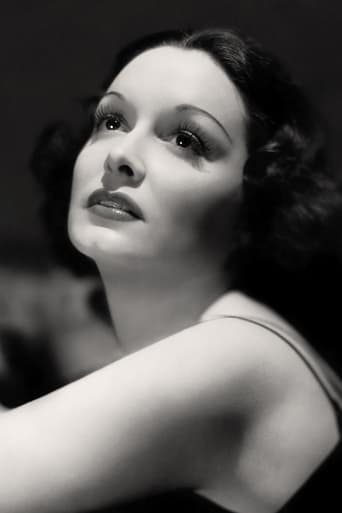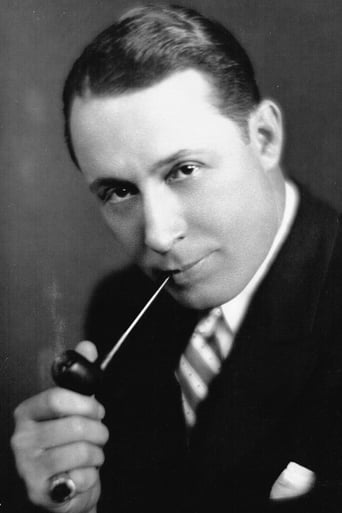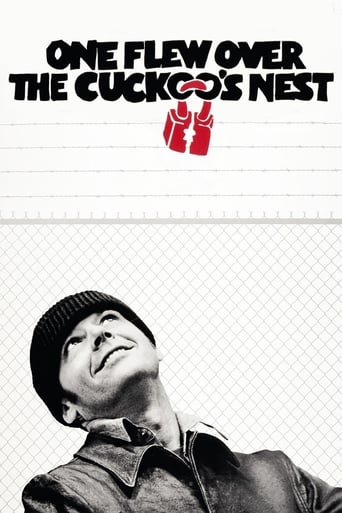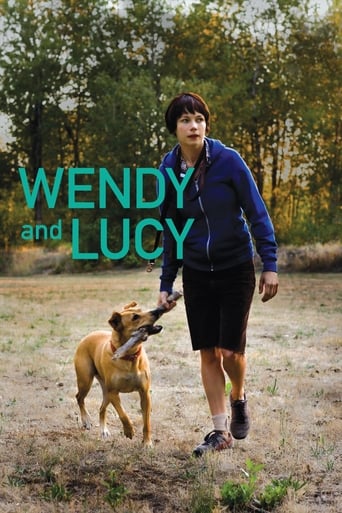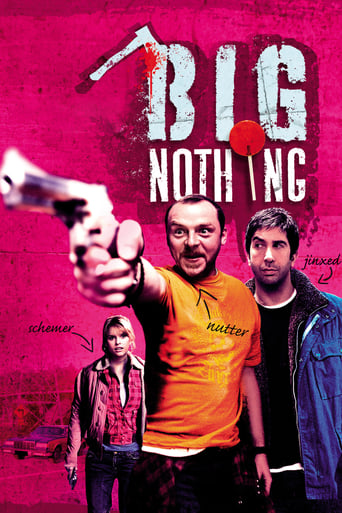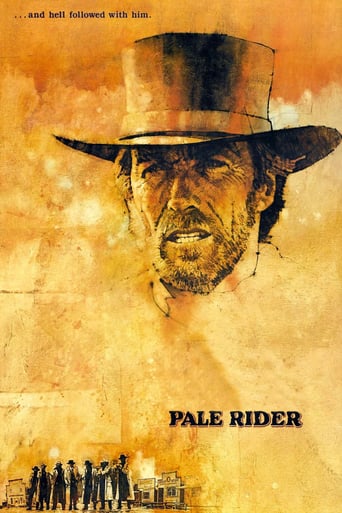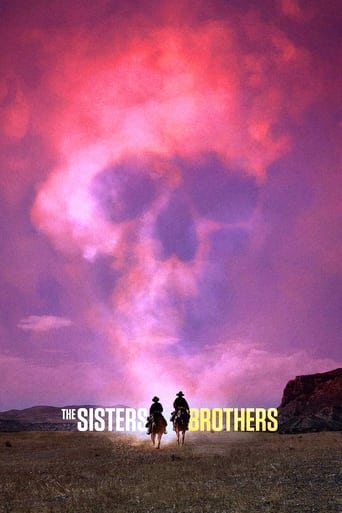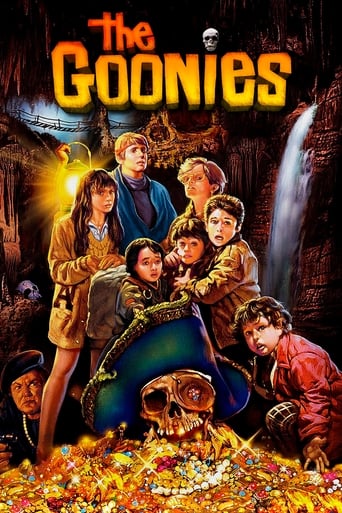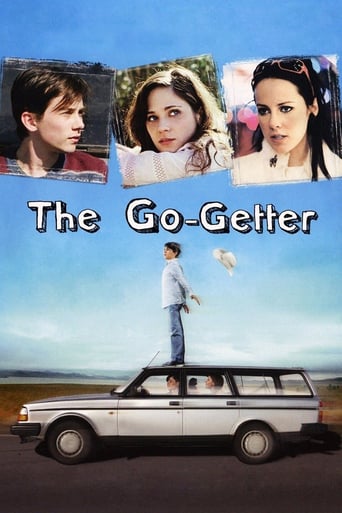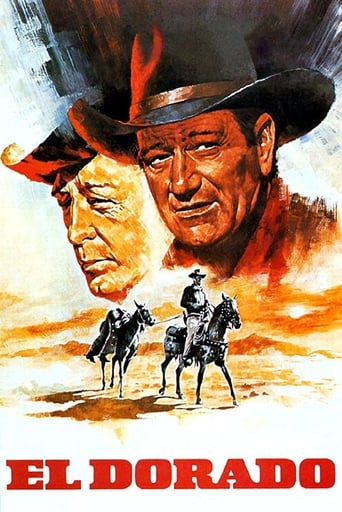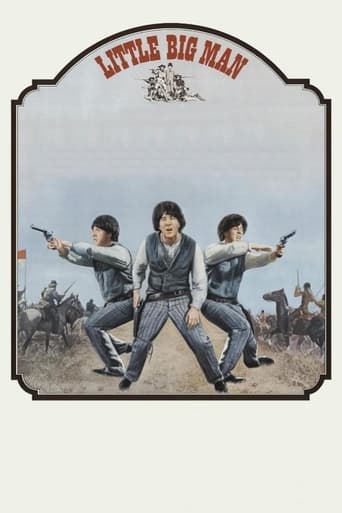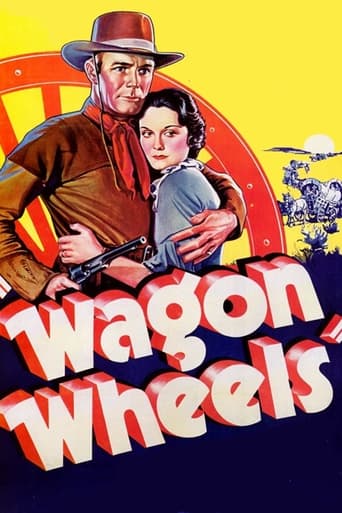
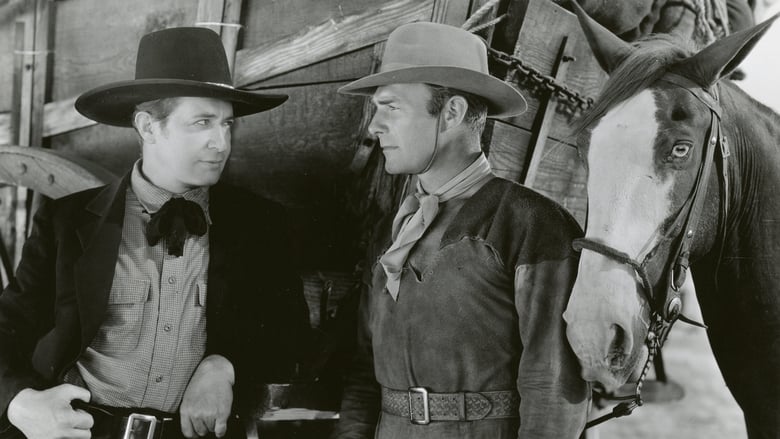
 Watch Now
Watch Now





Wagon Wheels (1934)
 Watch Now
Watch Now





A wagon train heads west from Independence, Mo., along the Oregon Trail, led by proud cowboy Clint Belmet. On board are feisty young widow Nancy Wellington and her toddler, Sonny, as well as the older Abby Masters, who begins a romance with scout Jim Burch. Along the way, the wagon train battles Indians led by Kenneth Murdock, a trapper who doesn't welcome competition for Oregon's lucrative fur trade. Wagon Wheels is a 1934 remake of 1931's Fighting Caravans, using stock footage from the original.
Watch Trailer
Cast


Similar titles
Reviews
Pretty Good
It's funny, it's tense, it features two great performances from two actors and the director expertly creates a web of odd tension where you actually don't know what is happening for the majority of the run time.
It's a good bad... and worth a popcorn matinée. While it's easy to lament what could have been...
It is an exhilarating, distressing, funny and profound film, with one of the more memorable film scores in years,
Copyright 21 September 1934 by Paramount Productions, Inc. New York opening at the Mayfair: 3 October 1934. U.S. release: 15 September 1934. U.K. release: 23 March 1935. 6 reels. 56 minutes. Alternative U.S. TV title: CARAVANS WEST.SYNOPSIS: Fur trappers stir up Indians to attack a wagon train headed for Oregon in 1844.NOTES: A re-make of Fighting Caravans (1931) which starred Gary Cooper as Clint Belmet, Fred Kohler as Murdock and Lily Damita as the heroine.Charles Barton's first film as full director.COMMENT: You would naturally expect William A. Wellman's close friend and longtime minor associate to model his first film after the master. But Hollywood is usually so unpredictable and illogical, it's actually a surprise to find this surmise actually happening. Barton never became a really class "A" director and his later films with the likes of Abbott & Costello and Donald O'Connor are just about as far away from Wellman territory as it's possible to get. But here he makes a reasonable attempt to follow Wellman's foot-steps with a slice of historical saga. Although the plot is different, notice how close in mood and structure and atmosphere this movie is not only to Wellman's Westward the Women (1951), but even more to Ford's Wagon Master (1950).It's said that this movie uses out-takes from Fighting Caravans, which is probably correct though the footage is so skillfully integrated and matched that most people will assume that a lot of money was spent on Wagon Wheels. It certainly looks mighty impressive. Not only ruggedly picturesque, but vividly, colorfully realistic. The action spots are vigorously staged, and though there is room for romance and sentiment, these elements are for the most part subordinated. With three exceptions, the approach is unvarnished and unglamorously realistic. The exceptions are a bit of amusing comic by-play between Jan Duggan's over-romantic spinster and Raymond Hatton's rough-hewn frontiersman, three or four rousing musical interludes (a device which certainly brings Wagon Master to mind), and some unfortunate but fortunately limited encounters between our hero and a typically Hollywood precocious ankle-biter, over-enthusiastically played by Billy Lee. The rest of the cast is much more agreeable, with Randolph Scott contributing his usual stalwartly ingratiating performance, Gail Patrick making a surprisingly spirited heroine, and solid character studies from the likes of Jan Duggan, Leila Bennett, Raymond Hatton, villainous Monte Blue, and Olin Howland doing more than justice to a major role. All told, Barton's direction has the necessary sweep and pace, whilst production values are by "B" standards outstandingly lavish.OTHER VIEWS: It seems a contradiction in terms to talk about a "B" epic, but that's exactly what this remarkable film is. In fact were it not for its short running time, Wagon Wheels could make every claim to being a class "A" feature - and no audience would argue the point. The scriptwriters have packed an astonishing amount of incident into 56 minutes, and yet seem to have found plenty of time and opportunity not only for lavish pictorial effects of the multi-wagon train stretching clear to the horizon but for rich characterizations and three or four appropriately realistic musical interludes as well... In fact the emphasis throughout is firmly on realism. The film conveys not only a vivid record of the rigors of the trek, but an unvarnished look at the pioneers themselves: heroes certainly, but with feelings and dreams, lusts and emotions strangely recognizable as akin to our own.
One of about twenty Zane Grey novels filmed by Paramount from 1930-1940, WAGON WHEELS is a remake of FIGHTING CARAVAN, a movie about the Oregon Trail. It's definitely a B movie, with its running time under an hour, plenty of library footage to give it some size, Charles Barton sitting in the director's chair for the first time and singing to eke it out -- Even Randolph Scott warbles a couple of lines of the title song.It's worth seeing for Scott in an early western. His first appearance in one had been a bit part in THE VIRGINIAN, but since his success in WILD HORSE MESA and THE THUNDERING HERD, Paramount had been giving him one or two oaters a year, in between the usual assortment of comedies, dramas and even lending him to other studios for musicals. He's solid here, opposite Gail Patrick, with some good support from Raymond Hatton as an old Mountain Man. However, it's still an okay B movie, even if he would do great things in the genre over the next three decades.
A wagon train rolling from Missouri to Oregon or CA was, of course, a popular theme for a number of early westerns, including the ponderous John Wayne -starring "The Big Trail"(1930) extravaganza. You may prefer this later(1934), more modest, more musically inclined, version, in which Randolph Scott takes Wayne's place as the young wagon master and scout. Like Wayne, Randy has two grizzled mountain men to help him keep things rolling and, like Wayne, he has a cryptic criminal element to deal with. Finally, like Wayne, he has a young single woman who is initially at odds with him, but we know they will eventually end up together. Unlike Wayne, Randy also has 4 y.o. Billy Lee to lighten things up from time to time. Spanky MacFarland had nothing over Billy in terms of charisma and cuteness. Neither would make the transition to teen and adult actor. We first see Billy peeking out of a wicker chest where his mother, Nancy(Gail Parick) has hidden him, having stolen him from her parents. Later, Randy discovers him wandering the camp and is led to Nancy. When Randy inquires about Nancy's husband and motive for joining the train, Billy contradicts her verbal responses with body language. Billy and Randy have taken a liking to each other, which helps change the the relationship between Randy and Nancy from antagonistic to friendly to romantic. Billy later makes mischief with his sling shot, but zaps a couple of murderous 'Indians' with it. He makes a secret wish before blowing out his birthday candles, with a wink at Randy, and dominates the last film scene, having helped achieve his secret wish.Gail PatricK had a substantial film career, mostly as a supporting actress. Relatively tall and thin,well educated, forceful and southern-bred, she made an excellent match for tall, well-educated, aristocratic, southern-bred Randy...., Jan Duggan and Leila Bennett played a pair of eccentric old spinster sisters. Jan played Abby, the bookish one who writes a history of the journey and renders a high brow song around the camp. Uncredited Loraine Bridges, with a strong resemblance to Gail, rendered a more pleasant song at the camp. Of course, the standard "Wagon Train" was sung by groups several times. Raymond Hatton and Olin Howland served as Randy's sidekicks. Both had long careers in bit parts. Monte Blue, playing the chief adversary of Randy, also had a substantial film career as a character actor, often a villain. Here, he serves as scout for fur trapping and 'Indian' interests, who don't want settlers arriving to claim presently free for all lands. Actually, even the Oregon Territory had been pretty well denuded of beaver by this time. The relatively primitive filming technology and acting sophistication, the B&W filming, the often aged-looking films and shabby buildings and clothes of actors tend to give westerns of the '30s and often '40s a more authentic feel than later westerns. That's certainly true of this film, with stock film of long shots from the prior "Fighting Caravans" contributing to the authentic look. The inclusion of occasional music numbers, either sung by the people, or as familiar background music, also helps lighten the atmosphere from drudgery and problems. Presently, this film is available as part of a cheap DVD package of some of Scott's lesser known westerns.There were a few obvious technological anachronisms, such as the firearms and perhaps their modern-looking water pump for putting out fires! Perhaps the most glaring one was their wagon load of kerosene, presumably for lanterns and perhaps cooking stoves. Kerosene, initially distilled from coal, would become available in some areas a decade or so later, but was expensive. Thus, this should not have been available in scaring off an 'Indian' war party. In contrast to actual wagon trains, I saw no oxen teams, which were the most popular draft animals for this journey. I did see quite a few mule teams, which were the second most popular animal for pulling the wagons.
In 1931 Paramount filmed Zane Grey's Fighting Caravans and turned it into an A picture western with Gary Cooper. It was the mentality of the studio bosses back then, why waste good stock footage. So a shorter version of this same story was done three years later with Randolph Scott playing the leading role of Clint Belmet.Having both versions, I could compare them side by side. Same footage involving the wagon train going west and of the Indian attack climax. Just juxtapose close-ups of the current cast and you got yourself another movie on the cheap.Since this version is only 56 minutes it was part of Paramount's B unit and played second on double bills.Like in the first Fighting Caravans, Wagon Wheels has one young scout and two old ones leading the wagon train west. Gail Patrick gets one of her first and only leads. Usually Patrick is cast as the other woman. Maybe her best know role was as Carole Lombard's sister in My Man Godfrey. Gary Cooper was an A list star, but Randolph Scott was on the way up and would get to not quite the top of the heap soon. He acquits himself well here.Great stuff for the Saturday matinée crowd.



